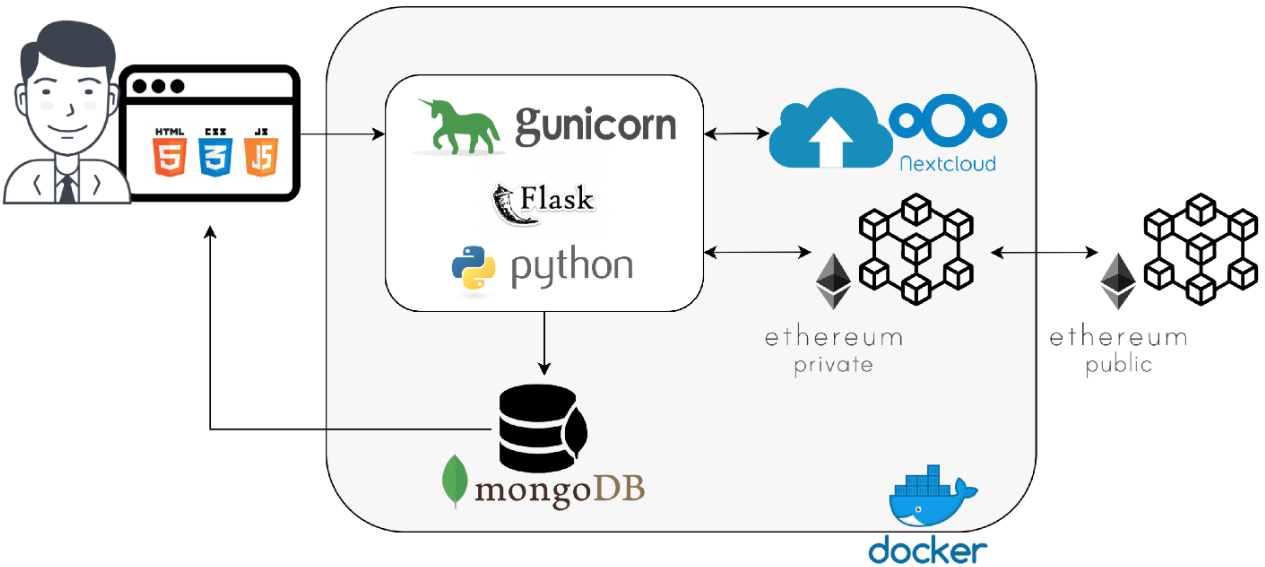Difference between revisions of "Template:Article of the week"
Shawndouglas (talk | contribs) (Updated article of the week text) |
Shawndouglas (talk | contribs) (Updated article of the week text) |
||
| Line 1: | Line 1: | ||
<div style="float: left; margin: 0.5em 0.9em 0.4em 0em;">[[File: | <div style="float: left; margin: 0.5em 0.9em 0.4em 0em;">[[File:Fig4 Celesti Sensors20 20-9.png|240px]]</div> | ||
'''"[[Journal: | '''"[[Journal:Blockchain-based healthcare workflow for IoT-connected laboratories in federated hospital clouds|Blockchain-based healthcare workflow for IoT-connected laboratories in federated hospital clouds]]"''' | ||
[[ | In a [[pandemic]]-related situation such as that caused by the [[SARS-CoV-2]] virus, the need for [[telemedicine]] and other distanced services becomes dramatically fundamental to reducing the movement of patients, and by extension reducing the risk of infection in healthcare settings. One potential avenue for achieving this is through leveraging [[cloud computing]] and [[internet of things]] (IoT) technologies. This paper proposes an IoT-connected laboratory service where clinical exams are performed on patients directly in a [[hospital]] by technicians through the use of IoT medical diagnostic devices, with results automatically being sent via the hospital's cloud to doctors of federated hospitals for validation and/or consultation. In particular, we discuss a distributed scenario where nurses, technicians, and medical doctors belonging to different hospitals cooperate through their federated hospital clouds ... ('''[[Journal:Blockchain-based healthcare workflow for IoT-connected laboratories in federated hospital clouds|Full article...]]''')<br /> | ||
<br /> | <br /> | ||
''Recently featured'': | ''Recently featured'': | ||
{{flowlist | | {{flowlist | | ||
* [[Journal:Informatics-driven quality improvement in the modern histology lab|Informatics-driven quality improvement in the modern histology lab]] | |||
* [[Journal:Popularity and performance of bioinformatics software: The case of gene set analysis|Popularity and performance of bioinformatics software: The case of gene set analysis]] | * [[Journal:Popularity and performance of bioinformatics software: The case of gene set analysis|Popularity and performance of bioinformatics software: The case of gene set analysis]] | ||
* [[Journal:Privacy-preserving healthcare informatics: A review|Privacy-preserving healthcare informatics: A review]] | * [[Journal:Privacy-preserving healthcare informatics: A review|Privacy-preserving healthcare informatics: A review]] | ||
}} | }} | ||
Revision as of 16:10, 21 February 2022
"Blockchain-based healthcare workflow for IoT-connected laboratories in federated hospital clouds"
In a pandemic-related situation such as that caused by the SARS-CoV-2 virus, the need for telemedicine and other distanced services becomes dramatically fundamental to reducing the movement of patients, and by extension reducing the risk of infection in healthcare settings. One potential avenue for achieving this is through leveraging cloud computing and internet of things (IoT) technologies. This paper proposes an IoT-connected laboratory service where clinical exams are performed on patients directly in a hospital by technicians through the use of IoT medical diagnostic devices, with results automatically being sent via the hospital's cloud to doctors of federated hospitals for validation and/or consultation. In particular, we discuss a distributed scenario where nurses, technicians, and medical doctors belonging to different hospitals cooperate through their federated hospital clouds ... (Full article...)
Recently featured:










